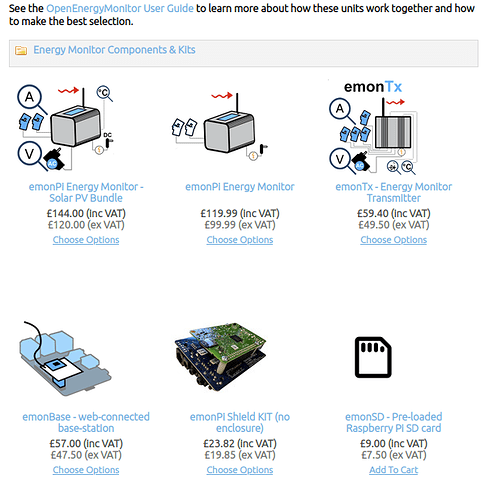The reason I asked was because you mentioned “wired Ethernet” - I was guessing you had an Arduino with Ethernet. If the emonTx is in saleable condition, the shop might exchange it. It’s worth an email to ask, if that’s what you’d prefer.
Yes there is: https://www.jaycar.com.au/9v-ac-1-amp-plugpack/p/MP3027 also https://www.jaycar.co.nz/9v-ac-1-amp-plugpack/p/MP3027
Voltage calibration coefficient - 300.0 (No-load = 10.4 V)
True, however it would mean difficult and expensive certification for sale within the E.U, which is sidestepped when we use an already-certified adapter outputting a low voltage.
“emon” is a generic name, we have emonSD, emonTH, emonTx, emonCMS, emonPi, emonEVSE and emonDC (I think that’s all  )
)
That’s possibly true if you always have loads with a power factor close to unity. When the power factor of your load is poor, then the scalar product of voltage and current will yield an apparent power that can be far removed from the real power. If you’re content with that, then that’s OK.
If you carefully calibrate your emonTx, you should be able to get to within 1% of the reference meter you’re using. You might want to review this: IoTaWatt and emonTx Accuracy (Note the Iotawatt is no longer available here.)
Ah, so in effect, you’re monitoring two largely independent systems: exporting PV to the grid, and current from the battery’s inverter and calculating apparent power using the inverter’s voltage output.
A reasonably good tutorial: C++ In Action: Industrial Strength Programming Techniques - Free Computer, Programming, Mathematics, Technical Books, Lecture Notes and Tutorials

